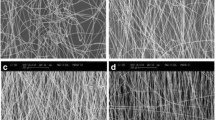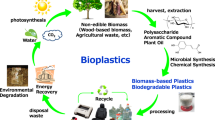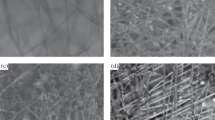Abstract
The effect of orientation in the amorphous and crystalline regions on the biodegradability of PTMS [poly(tetramethylene succinate)] was studied using the amorphous orientation function, birefringence, and crystallinity. The crystalline and amorphous intrinsic lateral sonic moduli, E 0t,c and E 0t,am , were 2.61 × 103 and 0.41 × 103 MPa, respectively. Using the data on birefringence, crystalline and amorphous orientation function (f ∈ and f am), crystallinity, and sonic modulus of the oriented PTMS fibers, the intrinsic birefringence of the crystalline (Δ 0c ) and amorphous (Δ 0am ) regions were evaluated to be 0.0561 and 0.0634, respectively. The biodegradabilities of oriented PTMS films were reduced as the elongation increased, i.e., the amorphous orientation increased. At low elongation (100 and 150%), however, biodegradabilities remained unchanged when the degradation test was performed in activated sludge, which was attributed to the amorphous orientation occurring even at 100% elongation, though the amorphous orientation direction was perpendicular to the fiber axis.
Similar content being viewed by others
REFERENCES
S. J. Holland, B. J. Tighe, and P. L. Gould (1986) J. Control. Rel. 4, 155–180.
T. St. Pierre and E. Chiellini (1987) Bioact. J. Comp. Polym. 2, 4–30.
M. Vert (1986) Macromol. Chem. Macromol. Symp. 6, 109–122.
E. W. Fischer, H. J. Sterzel, and G. Wegner (1973) Kolloid-Z. Z. Polym. 251, 980–990.
B. K. Carter and G. L. Wilkes (1984) in S. W. Shalaby, A. S. Hoffman, B. D. Ratner, and T. A. Horbett (Eds.). Polymers as Biomaterials, Plenum Press, New York, pp. 67–92.
R. J. Fredericks, A. J. Melveger, and L. J. Dolegiewtz (1984) J. Polym. Sci. Polym. Phys. Ed. 22, 57–66.
E. W. Fischer, H. J. Sterzel, and G. Wegner (1973) Kolloik-Z. Z. Polym. 251, 980–990.
B. K. Carter and G. L. Wiles (1984) Polymers as Biomaterials, Plenum Press, New York, pp. 67–92.
J. W. Ballow and S. Silverman (1944) Textile Res. J. 14, 282.
Z. W. Wilchinsky (1960) J. Appl. Phys. 31, 1969.
V. B. Gupta and S. Kumar (1979) J. Polym. Sci. Polym. Phys. Ed. 17, 1307.
K. J. Ihn, E. S. Yoo, and S. S. Im (1995) Macromolecules 28(7), 2460.
Author information
Authors and Affiliations
Rights and permissions
About this article
Cite this article
Yoo, E.S., Im, S.S. Effect of Crystalline and Amorphous Structures on Biodegradability of Poly(Tetramethylene Succinate). Journal of Polymers and the Environment 7, 19–26 (1999). https://doi.org/10.1023/A:1021838017958
Issue Date:
DOI: https://doi.org/10.1023/A:1021838017958




